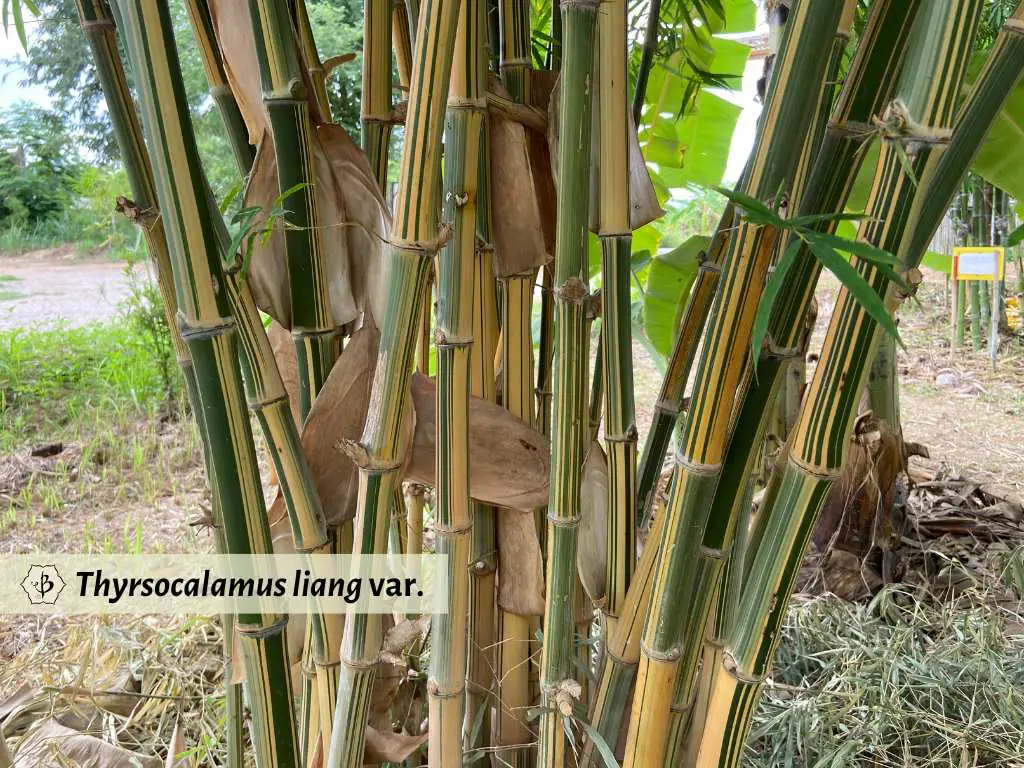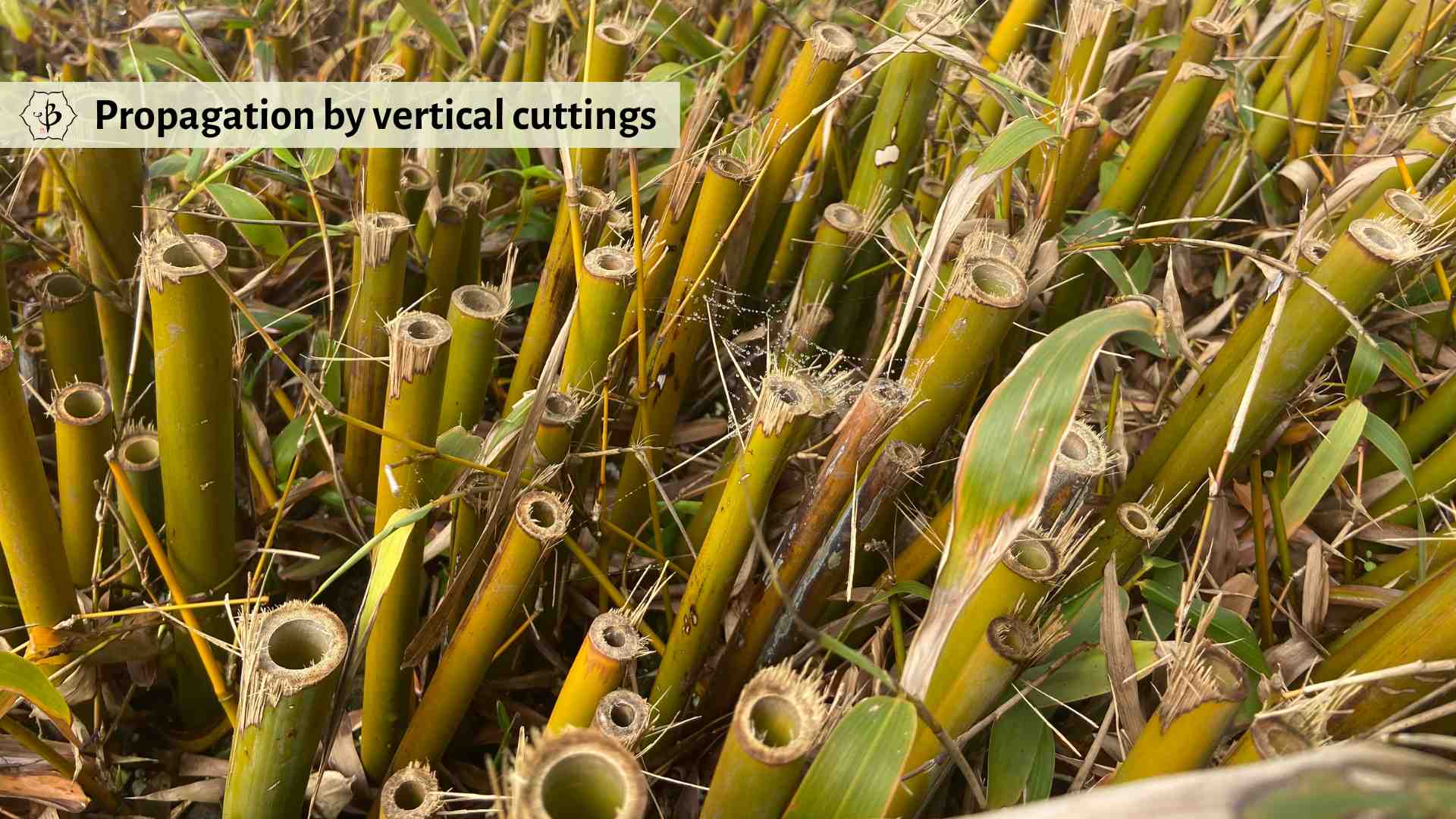There’s a new bamboo species on the scene. And it’s not quite like anything we’ve seen before. It’s called triple hybrid bamboo, and it’s something of a triumph of horticultural ingenuity. It might be also a harbinger of more incredible things to come. If other gardeners are able to replicate this and perform similar feats, then there’s no limit to the possibilities.
Triple Hybrid Bamboo could refer to any bamboo cultivar created by cross-breeding three other species. The best-known variety is a hybrid of three tropical bamboos, Dendrocalamus laitflorus, Dendrocalamus daii, and Bambusa textilis. Professor Zhang Guangchu of the Guangdong Forestry Research Institute in southwestern China developed this hybrid which first arrived in the US in 2012. Triple Hybrid Bamboo is a rare and collectible variety available for purchase from Tropical Bamboo in Palm Beach, Florida.
This article first appeared in August 2021, most recently updated in July 2024.

What’s a hybrid?
In biology, a hybrid is the offspring of two different species or varieties of plant or animal. A mule, for example, is a hybrid of a horse and a donkey. Different species of grain are commonly hybridized, such as wheat and rye. You can also create new breeds by crossing genes from different varieties within a single species. Such is the case with dog breeds or with cannabis varieties.
To hybridize or cross-pollinate two species of plants requires patience and perseverance, even under the best conditions. To begin with, you need two different but closely related plants, both flowering at the same time.
If the two plants are not close enough genetically, then they won’t be able to pollinate and reproduce successfully. You could try to pollinate some bamboo with some rye pollen, for example. Although they are both classified as grasses, in the family Poaceae, they are not close enough to cross-pollinate.
Having selected your plant specimens, the greater challenge is to gather pollen from the stamen of one plant’s flower and apply it to the pistils of the other plant’s flower. Pollen can be frozen and stored, but its shelf life is short and unreliable. It’s always best to hybridize with fresh pollen from plants actually flowering simultaneously.
Hybridizing bamboo
The process of creating a triple hybrid bamboo is neither common nor easy. In fact, I’d never even heard of it until quite recently.
The tricky thing about pollinating bamboo is the long and sometimes unpredictable flowering periods. (Check out this article on Bamboo Flowering.) Depending on the species of bamboo, the plants could take as long as 150 years to flower. Periods of 40 to 50 years are quite common for bamboo.
Cross-pollinating takes patience, as I said, but even the most devoted scientists have their limits. Rather than wait a half-century to gather pollen, Professor Zhang Guangchu was able to force his bamboo plants into flowering.
It’s not clear how the professor was able to accomplish this. Florists commonly force their plants to flower by adjusting the light cycles, making the plants “think” the seasons are changing as the days are getting shorter or longer. But because bamboo doesn’t flower annually, this method won’t work.
It’s possible that he used some kind of fertilizer or enzyme to make them flower. Others speculate that the professor induced stress to make the plant “think” it was going to die, which is a common technique to encourage early flowering. In any case, it’s not clear exactly how to do this with bamboo. Anyone interested should try to find “A Manual of Bamboo Hybridization” by Professor Zhang Guangchu.
Most bamboo species are monocarpic, meaning that they will die (or significantly suffer) after they’ve gone to flower. So forcing the bamboo to flower usually means sacrificing the plant. Luckily, bamboo grows pretty quickly and is easy enough to propagate.
Before the flowering bamboo dies, the flowers go to seed. Once the seeds are fully mature, the meticulous botanist can gather them and allow them time to dry. In the following spring, the seeds can go in the ground, and the gardener will hope for the best. Bamboo seeds last much longer than the pollen, so they can be stored in a cool dry place, or frozen, for many years. Germinating bamboo seeds, on the other hand, can be difficult.
Triple Hybrids
Those are the basic instructions for hybridizing bamboo, but if you want a triple hybrid, you’ll need to go another round. In other words, you have to do the hard part all over again. Cross your hybrid with another species, and then you’ll have a triple hybrid: the combination of three different species.
Once you’ve mastered the techniques of forcing flowering and transferring pollen, the sky’s the limit. You can attempt all manner of hybrids, triple hybrids and quadruple hybrids. At this point, good record-keeping becomes essential: keeping track of which pollen went to which flowers, and which seeds are which.
In this uncharted realm of bamboo cultivation, no one really knows what to expect. We can be sure that some hybrids will turn out better than others, producing more favorable combinations of desirable characteristics. But this will all take time and discipline.
Once a good hybrid is grown from seed, the bamboo is easy to propagate with cuttings. Therefore most gardeners won’t have to plant seeds, which can be a slow and frustrating experience.

Characteristics of Triple Hybrid Bamboo
Currently, Tropical Bamboo in Loxahatchee, Florida, is the only nursery offering triple hybrid bamboo. Their crossbreed of Dendrocalamus laitflorus, Dendrocalamus daii and Bambusa textilis is said to be exquisite.
Dendrocalamus is a tropical genus of clumping bamboo from Southeast Asia, including many of the most massive species of grass. Bambusa textilis is a popular ornamental, also known as weaver’s bamboo. It has tall, slender and elegant canes with a deep yellow color. The subspecies var. gracilis, aka graceful bamboo, is the most widely cultivated.
It was impossible to predict exactly what the hybrid of these three species would look like, but the results were stunning. The plant has the rich yellow color of Bambusa, but with some very attractive variegation. (See photo above.)
Gardeners report that this triple hybrid has a very vigorous growth habit. The Dendrocalamus influence seems to make bamboo grow faster and thicker than its Bambusa parent. At the same time, the Bambusa makes the plants a little more cold hardy, and easier to grow outside of Thailand or Indonesia.
Even so, this should be considered a tropical bamboo. For best results, plant it someplace where deep freezes are rare, such as Florida or Southern California. You can expect the spectacular culms to grow about 50 feet high and 3 to 4 inches thick.

Shopping for bamboo hybrids
Tropical Bamboo in Southern Florida is the only nursery selling this triple hybrid strain at this time. They hope to be adding another triple hybrid bamboo variety in the near future. Reach them by phone at (561) 784-2413.
As of summer 2021, the plants are available in four sizes, ranging from 3-gallon pots for $60 to 25-gallon pots for $250. Surely these clumping bamboos will make a fabulous addition to any tropical landscape.
A word about genetically modified bamboo
These days, these biggest breakthroughs in agricultural hybridization are happening in laboratories as much as in greenhouses. While it remains controversial in some circles, many biochemists are busy splicing genes to create new varieties of plants and vegetables. In fact, both processes aim to produce similar results.
So you may wonder whether scientists are actively working on genetically modified bamboo. Indeed, they are. This branch of science has expanded enormously in recent decades. And as with other crops, biochemists hope to create new strains of bamboo that grow faster, produce higher yields, and tolerate more diverse climates.
Given the growth habit of natural, heirloom bamboo species, however, I would offer a word of caution against creating a super-breed of bamboo. These massive grasses are already the fastest-growing plants on earth. Boosting their metabolism to supernatural levels could have some unintended consequences that we’re not quite ready for.
But in order to farm bamboo successfully and competitively in the United States, it may be necessary to develop breeds more adaptable to North American climate conditions.
Learn more
If you’re a fan of exotic bamboo and want to learn more about it, take a look at some of these popular articles.
- Tropical Bamboo for Florida and the Deep South
- Bamboo in Hawaii
- Rare and Exotic Bamboo
- Best bamoo species for farming
FEATURE PHOTO: A young shoot of Triple Hybrid Bamboo grown by Bryce Garling in central Florida.

























